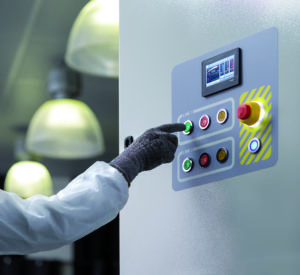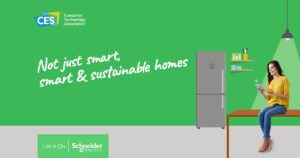Enterprises are more motivated than ever to control energy costs and increase sustainability, while the utility grids they rely on grow more vulnerable due to aging infrastructure, extreme weather, and rising energy demand. A microgrid can help your organization achieve its goals and control its energy future – with or without capital investment.
In this blog, I’ll introduce microgrids, their benefits, and some useful terms for understanding this transformative approach to energy.
1. What is a microgrid?
A microgrid is a set of on-site energy loads and resources that work as a system and can operate independently of the grid. It can be as small as a few solar panels and a battery or as large as an array of solar, wind, hydrogen, and other systems across multiple facilities or a community. An intelligent microgrid that automatically adjusts energy loads and resources to optimize cost and resilience requires a full stack of generation, storage, analytics, interconnection, and software components. This can be a complex undertaking, so finding the right partner is essential for success.
2. How does a microgrid help with resilience?
Utility outages are growing more prolonged and frequent in many areas, often caused by weather-related disasters and aging infrastructure. A microgrid enables your organization to remain powered by seamlessly switching to on-site generation or storage. If the grid fails, a microgrid controller can sense the disruption, disconnects from the utility, activates “island mode,” and reconnects when the utility service is restored.
3. How does a microgrid help with sustainability goals?
A microgrid provides the technical infrastructure to pilot, integrate, and scale renewable energy systems in lieu of or to balance out non-renewable sources from the grid at your own pace. With the right software, controller, and interconnection equipment, the microgrid can use renewable sources, including battery storage, to supply your needs and could enable providing decarbonized power through a utility to other users.
4. How does a microgrid aid in energy cost efficiency?
An intelligent microgrid controller determines the optimal times to consume, produce, store, or sell energy based on weather, predicted utility rates, and other factors. It allows you to use your own loads without paying peak rates from the utility and the option to sell excess power when available. A microgrid can be a long-term hedge against inflation as the cost of fossil-fuel utility plants increases relative to renewable sources.
5. What is Energy as a Service (EaaS)?
EaaS is a business model that lets your organization reap the benefits of microgrid ownership without the cost and risk of capital investment. With EaaS, partners like Schneider Electric, through their Joint Ventures with AlphaStruxure, GreenStruxure, and GreenNext, build, own, and operate a microgrid at your site for a long-term price per kWh. This gets the microgrid up and running faster and protects you from utility rate hikes. Schneider Electric can even transfer the asset to a partner when necessary, reducing your financial risk.
6. How can microgrids connect to the grid, and what are distributed energy resources (DERs)?
DERs are power resources outside a central grid, including microgrid generation and storage systems. A microgrid controller automatically connects and disconnects these from the macro grid by remotely opening or closing a circuit breaker or switch. To do this seamlessly, the microgrid should be integrated with the utility’s automation systems at the substation and distribution levels. By connecting a microgrid to the utility grid as a DER, you can help increase the role of renewables on the grid and improve grid resilience.
7. What is a power purchase agreement (PPA)?
A PPA is an agreement to sell energy at a predetermined price. The buyer may be an energy supplier that resells the power or a company with significant energy requirements, or a need to reduce its carbon footprint. Renewable energy developers commonly sell power through PPAs to achieve a return on their infrastructure investment. Microgrid owners also can enter into PPAs to sell their unused energy to companies or utilities. EaaS is essentially a PPA in which a third party owns a microgrid, and you pay the operational costs as a fixed price for energy over time.
8. What is a virtual power plant (VPP)?
A VPP is an aggregation of DERs that can be dispatched and traded in energy markets as a unit. The aggregator can sell the VPP as energy capacity or as energy supply at certain times of the day. Often, VPPs sell stored renewable power during peak periods, saving utilities from having to add fossil-fuel capacity. Participating in a VPP can streamline the process of selling energy from a microgrid.
9. How do microgrids orchestrate and optimize utility rates or demand response?
A microgrid adjusts the consumption and storage of locally generated energy to optimize costs and produce revenue. When the price of utility power peaks under high demand, the microgrid can automatically switch your loads to on-site energy instead. If excess power is generated or stored on the microgrid, you can participate in demand response programs by selling energy to the utility, easing overall demand on the grid.
10. How should you evaluate whether a microgrid is right for you?
Determine whether your goal is resilience, sustainability, cost reduction, or all three. Their relative importance will affect how you calculate your return on investment. Schneider Electric has various resources for assessing a microgrid’s potential ROI, from a simple five-minute tool to a more complex one-day evaluation. Other evaluation services can help you dig deeper if a microgrid looks promising.





Conversation
Where can I purchase schneider microgrid controllers
Hi Irineo,
To learn more about EcoStruxure Microgrid Operation, please visit – https://www.se.com/ww/en/product-range/65897-ecostruxure-microgrid-operation/?parent-category-id=26426075&parent-subcategory-id=88993&filter=business-6-medium-voltage-distribution-and-grid-automation#overview.
Hi, I Like to know more about it,
Like how we Can partner, is ther any partner program. Available, Pls let us know,
Hi Karan,
To learn more about our EcoXpert partner program, please visit https://www.se.com/us/en/partners/ecoxpert/.
Thanks
My pleasure.
Very good and opt info on Sustainable Energy Sources like micro grid., From Schneider Electric.,
Thanks!